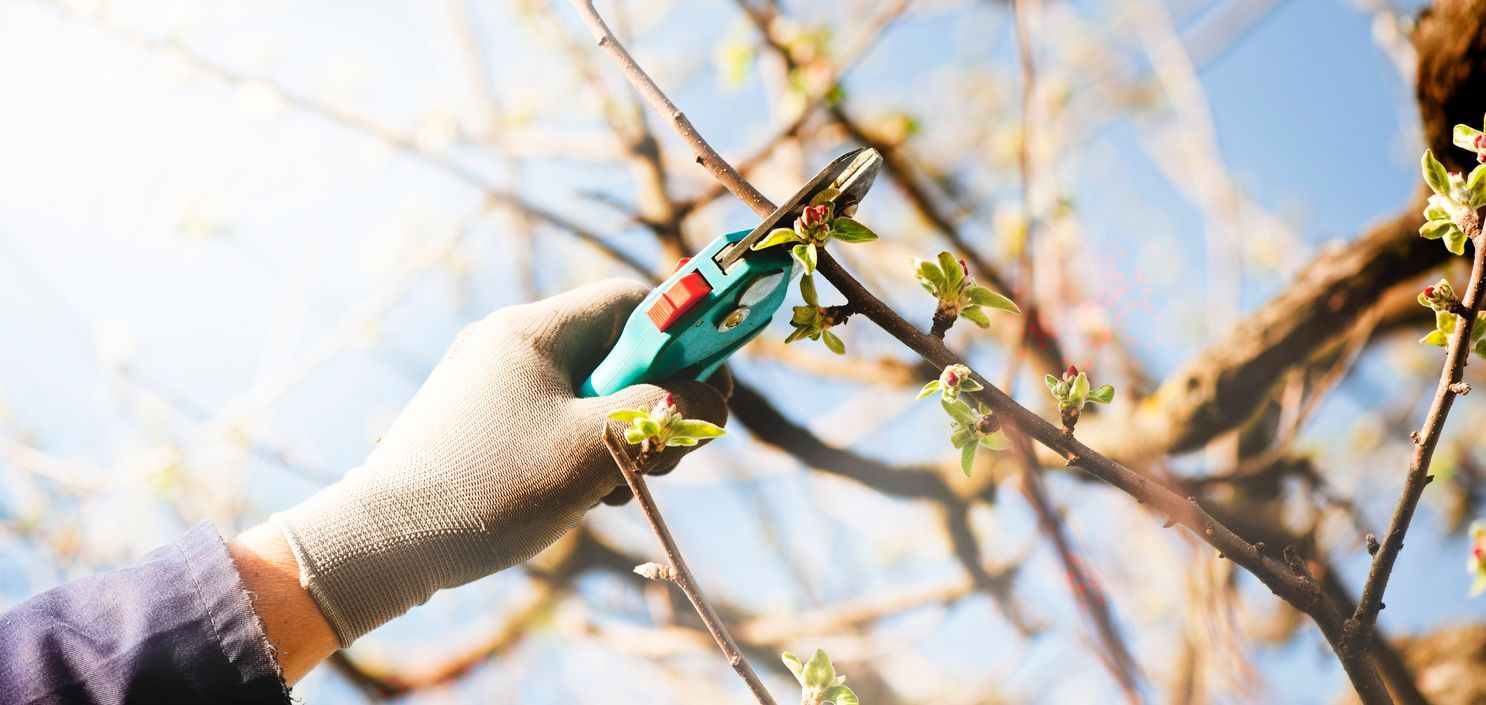How to Properly Care for Your Trees This Spring
Spring is almost here, which means we can expect to hear the sound of birds chirping and smell the fresh scent of budding trees. While nature will certainly take its course in helping to wake your trees up after a long hibernation period, you'll still need to spend some time in the garden for some spring tree care to give your trees the TLC they deserve to help not only survive, but thrive!

By taking steps to prepare your trees for the spring, you're ensuring they enter the new season in the healthiest state possible and that they stay strong for years to come. Before we dive into our spring tree care tips, it's important to understand their benefits:
- Improved tree health
- Enhanced appearance
- Replenishing nutrients
- Increase property value
- Improve safety
- Reduce diseases and pests
Let's get started on the different spring tree care steps you should take to properly care of your trees this spring!
Pruning & Trimming
The best time to prune most trees is in winter when the tree is dormant. However, removing dead, damaged, diseased, and broken branches in spring encourages new growth. All trees will need pruning at some point in their life. Pruning and trimming help to:
- Promote plant health
- Increase new growth
- Improve the overall aesthetics of your garden
- Protect people and property
How to Make Pruning Cuts
Before making any cuts on your tree, remove any dead, diseased, or broken branches. If you're removing a branch completely, you must make a proper cut to avoid causing damage to the tree. We'll discuss how to cut branches based on size.
Thin Branches: Diameter of 20mm or Less
These small branches may be removed with a disinfected, sharp pair of garden shears or a two-handed pruning lopper.
Thick Branches: Diameter of 21mm or More
You can effectively remove larger branches in three steps:
- Make a shallow cut on the underside of the branch. Make sure the cut is approximately 4 to 5 inches away from the trunk.
- Cut the branch off about 2 to 3 inches from the initial cut (6 to 7 inches away from the trunk). This double-cut method is to prevent the bark from peeling down the side of the trunk when the branch falls.
- The final cut should be made just outside the branch collar. The branch collar is the slightly swollen area where the branch and the trunk are joined together.
Fertilizing
If you want your tree to fully flourish, you'll want to apply fertilizer in the spring. During the winter, trees are dormant and don't require any fertilizer. When the soil begins to defrost in the spring, your tree will require nutrients that are missing in the soil to help promote healthy growth. The benefits of fertilizing your tree in spring include:
- Promotes a new flush of growth
- Increases the vibrancy of tree leaves, helping them stay green through summer and into fall
- Supplies essential nutrients to help your trees fight off infections
What Type of Fertilizer to Use
The most common nutrients to apply are nitrogen, phosphorus, as well as potassium. We recommend using a complete fertilizer, such as 16-4-8, 12-6-6, or 12-4-8. There are two types of fertilizers available - fast-release and slow-release. While fast-release fertilizers are cheaper than slow-release products, they may leach quickly through the soil, depending on your soil type.
For newly planted trees, or in sloped areas where runoff is very high, we recommend slow-release fertilizers.
How Often Should You Fertilize?
Young and rapidly growing trees should be fertilized annually to help promote strong roots. Mature trees need fertilization every two to three years to maintain good foliage color.
Disease Prevention
Another spring tree care tip is disease prevention. You'll also want to apply diseases and pest treatment to your trees during the spring because it's the time when they are most active. The most common tree diseases include:
- Leaf spot - This tree disease is caused by fungus. If your tree has only a few infected leaves, it's not the end of the world and may not require treatment. However, if you notice many leaves with leaf spots, you'll want to apply the treatment.
- Tree scale - The tree scale is typically brown, gray, or white, and it appears on your tree's bark, making it look scaly.
- Mites - There are several varieties of mites, but one of the most common is the spider mite. In fact, they're incredibly tiny, so you may not notice them at first. If you see brown branches or dead patches of needles, you may have mites.
Let SES Landscape Help Keep Your Trees Healthy
At SES Landscape, we understand that homeowners have a lot going on, and don't always have the time to tend to their gardens. If you're looking for a professional to help you with spring tree care, look no further than SES Landscape! We're the top-rated landscaping company in the Kansas City metro area. Contact us today to find out why!


